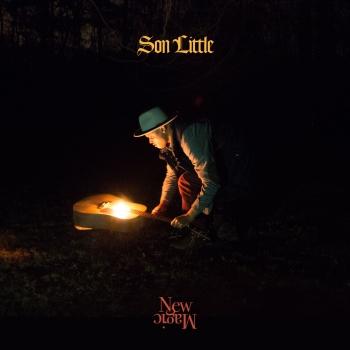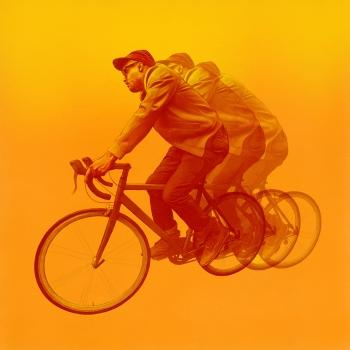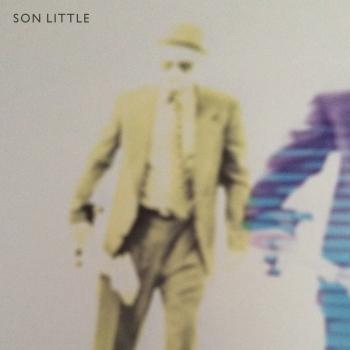
aloha Son Little
Album Info
Album Veröffentlichung:
2020
HRA-Veröffentlichung:
31.01.2020
Das Album enthält Albumcover
- 1 hey rose 02:55
- 2 about her. again. 03:46
- 3 mahalia 03:54
- 4 bbbaby 03:32
- 5 suffer 04:46
- 6 that's the way 04:18
- 7 3rd eye weeping 03:12
- 8 don't wait up 02:47
- 9 belladonna 03:15
- 10 o clever one 03:37
- 11 neve give up 03:41
- 12 after all (i must be wrong) 03:31
Info zu aloha
"Letting go can be a scary prospect," says Son Little. "But there's beauty in it, too. Everything you leave behind opens up space for something new in your life."
That was certainly the case with his album, Aloha, his third studio album. Recorded at Paris's iconic Studio Ferber, the entire project was an exercise in letting go, in ceding control, in surrendering to fate. While Son Little (the stage name of songwriter, producer, and multi-instrumentalist Aaron Livingston) still plays nearly every instrument on the album himself, he put his songs in the hands of an outside producer for the first time here, collaborating with French studio wizard Renaud Letang (Feist, Manu Chao) to create his boldest, most self-assured statement yet.
Equal parts vintage and modern, the collection blends classic soul, old-school R&B, and adventurous indie sensibilities into a timeless swirl fueled by gritty instrumental virtuosity and raw, raspy vocals. It's an ambitious work of vision and reflection, to be sure, but more than that, it's an ecstatic testament to the freedom that comes from torching the map and trusting the currents of life to carry you where you belong.
“I’d always produced myself in the past,” explains Little, “but it’s easy to get caught up in an endless quest for perfection when you do that. Working with Renaud let me see my work from an outsider’s perspective, and that helped me get out of my own way.”
Born Aaron Earl Livingston to a preacher and a teacher in Los Angeles, Little first came to international prominence with his self-titled debut, released in 2015 on ANTI- Records. While Little’s collaborations with The Roots and RJD2 had already helped him make a name for himself by that point in his adopted hometown of Philadelphia, critics on both sides of the pond were quick to recognize the unique power of Little’s solo recordings, which stripped the past for parts that could be reconstituted into something wholly new and original. NPR hailed Little’s “impeccably crafted songs” as “honest and unpretentious,” while The Independent proclaimed him “a formidable talent,” and Vice declared that he was “dissolving the barrier between R&B and rock 'n' roll one tearjerker at a time.”
Songs from the record racked up roughly 30 million streams on Spotify alone, and the album landed Little dates with everyone from Leon Bridges and Kelis to Shakey Graves and Mumford & Sons alongside festival appearances at Bonnaroo, Newport Folk, and more. Never one to rest on his laurels, Little showed off his production chops the following year, earning a GRAMMY Award for his work helming Mavis Staples’ acclaimed ‘See That My Grave Is Kept Clean,’ and in 2017, he released a critically lauded sophomore album, ‘New Magic,’ which Paste said “did for the blues what Sharon Jones did for soul music.”
By now, it’s probably clear that Son Little likes to keep busy. In order to create ‘aloha,’ though, Little knew he’d have to do the unthinkable: sit still. The next thing Little had to let go of was even more challenging. Just weeks before he was set to begin assembling the album demos in Petaluma, California, his hard drive fried, taking with it nearly a dozen detailed demos for new songs. For a meticulous planner like Little, it was a devastating blow, one that left him with no choice but to start over.
“Losing all that material felt like a nightmare at the time, but I’ve since learned to see it as an opportunity,” he reflects. “If I hadn’t lost all those songs, I never would have written all the new stuff that became ‘aloha.’”
Beginning again with what was essentially a blank slate, Little penned much of the new album in Petaluma, in a tiny house and it’s adjacent barn. He let the songs take him on a journey of self-exploration there, examining the kind of big-picture questions that emerged from his subconscious in the quiet stillness: What am I doing? How did I get here? Who do I really want to be?
“I let the dust settle after a hectic year, and stopped worrying about the music for a minute,” explains Little. “I tried to just tune in to what was happening in my mind, to just be present in my body. It was liberating.”
That sense of liberation is clear from the very beginning of ‘aloha,’ with album opener “hey rose” showcasing Little’s freewheeling way with words and lean, swaggering delivery. Inspired by the sense of infatuation that comes with new love, the track sets the stage for an album full of unflinching self-examination and daring sonic fusion. Little injects trippy psychedelia into Sam Cooke soul on the slow-burning “about her. again.,” channels Prince and Michael Jackson on the breezy “3rd eye weeping,” and marries sparse, distorted guitar tones with clean, dense vocal harmonies on the infectious “mahalia.”
“That song’s an apology delivered at the start of a relationship, instead of the end, when it all falls apart” says Little, who often collapses time and space in his writing by combining characters and scenes from throughout his life. “I’d been thinking a lot about how I find myself repeating the same mistakes in different areas of my life. I find myself drawn over and over to the same qualities in different people, and sometimes the dynamic can become toxic. Pointing the finger is easy. I’m trying to be better at acknowledging my part of the problem.”
Recognizing the power of our own self-destructive tendencies is a recurring theme on ‘aloha.’ Little mourns the suicide of a beloved uncle on ‘suffer’, using addiction and mental illness as a lens to explore forgiveness and empathy, laments the rapidly deteriorating world his two children are set to inherit on ‘o clever one,’ and meditates on the dangers of succumbing to passion at the expense of reason on “belladonna.”
“There’s a lightness that comes from being so deeply in love with a person or an idea,” says Little. “But there’s a danger that comes with it, too. It’s like a drug: a little bit and you feel incredible; too much and it kills you.”
It would be easy to feel helpless in the face of such inexorable forces, to feel as if we are prisoners of fate rather than masters of our own destiny, but Little instead finds peace in perseverance on the album. “Hallelujah,” he sings on the gorgeous ‘neve give up,’ “though I’m battered and blue / feel like I’m born to lose…Never will I give up.”
It is a potent reminder that letting go doesn’t mean giving in; in fact, quite the opposite. Letting go can be an act of defiance, of growth, of empowerment. Letting go requires a leap of faith, and, in Son Little’s case, that faith has been richly rewarded. Whether that means this album represents the end of one chapter or the beginning of the next is impossible to know just yet, but in either case, there’s really only one thing to say: aloha.
Son Little
Son Little
Playing his songs across the United States and in Europe over the past year, with a wide range of artists and to varying audiences, Son Little has noticed something particular about his own music.
“As I’ve been going around to different places with this very eclectic mix of other acts, one thing that’s struck me about my music is just how American it is,” he says.
And while he’s not wearing a stars-and-stripes polo while shooting fireworks and holding a sousaphone, his sentiment rings true. Here in this proud, brave land of blurred lines and regional dishes is a musical melting pot that sizzles and smokes, from sea to shining sea. Son Little is stirring that broth.
“Part of what’s unique about this country is its intense mixture of things. People in different regions don’t always understand each other that well, but music can go places that people won’t always go. That’s part of who I am and definitely part of the music I’m making, so now more than ever I feel very American.”
The artist formerly known as Aaron Livingston knows his nation well. He was born to a preacher and a teacher in Los Angeles, where he learned how to listen and how to play before moving east to New York and New Jersey. He dropped in and out of schools in Manhattan then Philadelphia, and there he collaborated with acts like The Roots and RJD2. He first planted his flag as Son Little with last year’s highly praised EP, Things I Forgot, a small collection of big songs that showcased his ability to hop across genres as well as he does state lines.
The pastiche and reach of his music is all over the map, literally. And he can hear a map in his music. In it, he can recognize the places he’s lived, traveled, and played to, places explored and discovered. “I hear places in the songs without trying to evoke them while writing. I can trace where a lot of my music came from, as my life and my family touch so many different places. I can hear the Gulf Coast of Louisiana in my voice, the way I say some of the words; I hear New York, definitely in my lyrics. Detroit is a place I haven’t spent a ton of time in, but if I explore the music of Detroit, I can hear myself in there, too.”
The bins of Son Little’s record store are divided into sections called “Tuesday 3 a.m.” or “Fluorescent Blues” or “Saying Goodbye” rather than “Rock” or “Soul” or “Pop.” It’s a space where people can discover fresh sounds they might not have been expecting based on feelings, emotions, and truth rather than imaginary lines drawn in the sand. “I never thought that genres matter, I just mixed them all up and put them next to each other,” he says. “Making a mix growing up, I’d put Nirvana next to Nas next to Coltrane; Hendrix next to Naughty By Nature, whatever. I always thought of it that way. I actually feel like it’s maybe the norm that people don’t even think about it anymore, except in the industry, where there’s more pressure to conform. Maybe the landscape is so blurry it makes people nervous, they just want to categorize something. Using band names as adjectives, that’s kinda cool but I look at it from my own thing and it’s gonna need more band names.”
In truth, Son Little’s music is devoid of genre, as it blends sounds together into a bright white hotness, like all the colors in the spectrum do when finding focus as one. As the saturation of light increases, color appears more pure. His new full-length album, Son Little, does the same. The sonic elements create visuals and vice versa. The album’s cover image is a saturated snapshot of a whirring, suited Son, worked over with long exposures and leaky ink, revealing a brilliant portrait of the blurry artist: the pure man with the pure music. “There’s a lot of different colors there and they kinda fade into each other, but the constant for me is the dream, the smudge, the saturation,” he says. “Every color there is very deep, very rich; you put them all together and it’s the bright light of the sun.”
The songs inside follow suit. They teem with small moments creating a bigger picture, a pointillist art piece made from junkyards and viewed from space. Pulling inspiration from the color wheel diaspora of American music, Son Little draws from a deep well, using different buckets to visit and revisit, finding flourishes to add to the core of his songs. There, at the end of “Doctor’s In,” is a roving banjo; there, at the start of “Go Blue Blood Red,” is a keyboard riff culled from a kid’s Blue Man Group keyboard; there, in “Carbon,” is an electric Howlin’ Wolf stomp and start. For Son Little, studio time is a joy, where every good idea leads to four more, so it’s back to the buckets.
And all this weaving and digging is in his DNA. It comes easily and honestly, since he is the person he claims to be and has lived the life he sings about. It’s all there in his lyrics, the tales of struggle and joy, of fear and fortitude. His words, chosen with care and delivered with skill, address relationships with class and race as well as with people and projects. Vulnerability and virility are sung in equal parts, showing us the actual measure of a man rather than the imaginary bulletproof titan that pervades today’s airwaves. In this world so concerned with the “realness” of its artists, in this industry of hyper-categorizing and compartmentalizing every last detail, it’s easy to forget what “being true” is all about. Somewhere along the path it became cool to clam up, to stay icy, to keep in line and collect your check. It takes courage to be real, and to Son Little, the only way to be real is to simply be yourself.
“The easy way to describe my audience would be to say it’s pretty broad, but the more accurate way of saying it is that my audience is the brave,” he says. “It’s the people who move amongst different crowds easily, who are open to new things and not waiting for other people to tell them what to like, who are very certain and know what they want to hear. That feeling has been strengthened by all these shows I’ve played in different markets, with artists who are so different from each other. I meet these people, and the thing they have most in common is that they don’t care what the trend is, or what other people think about it, what’s it’s called. They don’t care about any of that shit, they just like what they like and that’s that. It’s not about gender, age, race, nationality, or any of those things; it’s just about how you feel inside, about the world. It’s more of an attitude, a sense, than it is a genre or trend. It’s not a shirt at Urban Outfitters. It’s a lot deeper than that.”
To call Son Little, both the artist and the album, brave would be perhaps the most apt compliment you could pay. Like his fearless heroes—Hendrix, Dylan, Prince, Nas—what he is doing takes guts, but in truth, it’s the only way he knows how.
“That’s what it’s about, be brave, do the thing you’re afraid to do. When I look at it now, the whole album is that, every song is that. There’s nothing but that. There’s some aspects of it that I probably wanted to hold back or edit and just didn’t. I think I’ve learned not to censor the things that make me uncomfortable. On ‘About A Flood’ I sing, ‘What if every tear in me comes out?’ That’s an as-not-hard a fucking thing as you can say. At the end of the day I have to say to myself, ‘I don’t care, I said it.’ I’m gonna say it. Every single song has an element of that, in the lyrics and also musically. Let it be what it is.”
Salutes to the bright, brave light of the Son.
Dieses Album enthält kein Booklet












